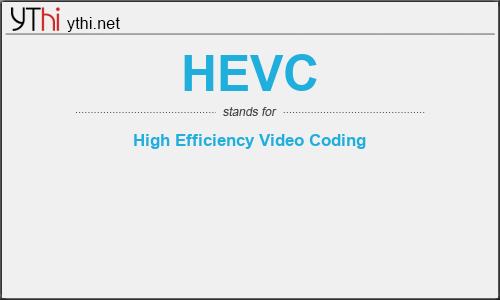What does HEVC mean? What is the full form of HEVC?
The full form of HEVC is High Efficiency Video Coding
High Efficiency Video Coding (HEVC), also known as H.265 and MPEG-H Part 2, is a video compression standard designed as part of the MPEG-H project as a successor to the widely used Advanced Video Coding (AVC, H.264, or MPEG-4 Part 10). In comparison to AVC, HEVC offers from 25% to 50% better data compression at the same level of video quality, or substantially improved video quality at the same bit rate. It supports resolutions up to 8192×4320, including 8K UHD, and unlike the primarily 8-bit AVC, HEVC’s higher fidelity Main10 profile has been incorporated into nearly all supporting hardware.
While AVC uses the integer discrete cosine transform (DCT) with 4×4 and 8×8 block sizes, HEVC uses integer DCT and DST transforms with varied block sizes between 4×4 and 32×32. The High Efficiency Image Format (HEIF) is based on HEVC. As of 2019, HEVC is used by 43% of video developers, and is the second most widely used video coding format after AVC.
see also What does H265 mean? What is the full form of H265?
HEVC
means
High Efficiency Video Coding![]()
Translate High Efficiency Video Coding to other language.


Leave a Reply
You must be logged in to post a comment.